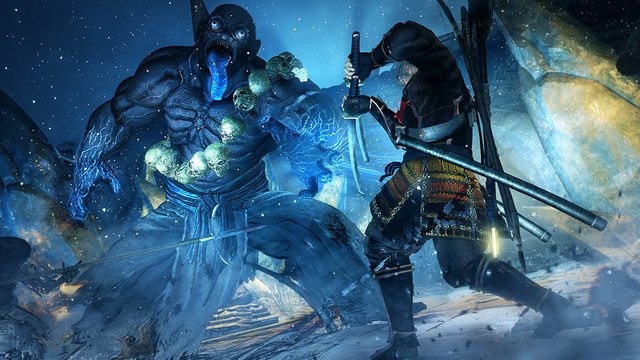
Japan’s Sengoku period is a melting pot of conflict, where proud care in the crafts of battle means prosperity, and negligence spells doom. In Nioh’s opening hours, it becomes clear why Team Ninja chose to contextualise their brutal new RPG here in feudal Japan. The company’s signature talent for challenging, action-oriented combat feels right at home amidst the time of the Samurai.
The myth and the man.
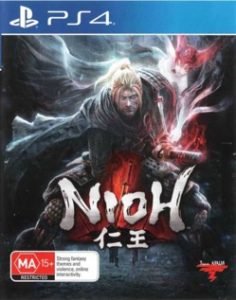
Nioh isn’t all based in history and seriousness, however. (Did I mention William’s companion is a spirit?) “Amrita” is just the tip of the iceberg where its fantasy elements are concerned. The supernatural hangs over the game’s war-torn environments like a haze, and the game’s epic and surprisingly whimsical story full of magic, spirits and Japanese folklore only adds to Nioh’s unique flavour. Whilst staging Sengoku’s conflicts in the forefront, supernatural elements are peppered throughout the story, often taking centre stage, meshing a historical Japanese setting with dark-fantasy to make for a singularly intriguing world. Unfortunately, in later levels the art direction drifts towards sameness, with Edward trolling through yet another ruined village or burnt tower, though the structure of these levels keeps everything fresh.
These levels got Soul.
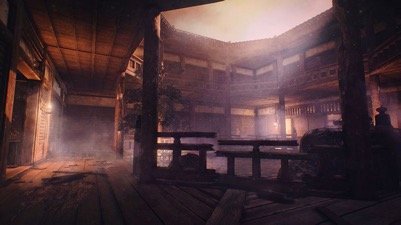
Nioh’s levels are broken up into missions and sub-missions, navigated through a stage select. The game is broken up into several of Japan’s provincial regions, tracking William’s path throughout its roughly 50-hour campaign. Missions are displayed on a segmented map of Japan, and while not an open world, Nioh’s mission select offers a place to relax and take in your incremental progress. Here you can also navigate all Nioh’s deep RPG systems, from crafting tools at the forge, to training at the dojo, to linking up for some cooperative play. And it’s a treat after a huge play session to bask in the progress you’ve made.
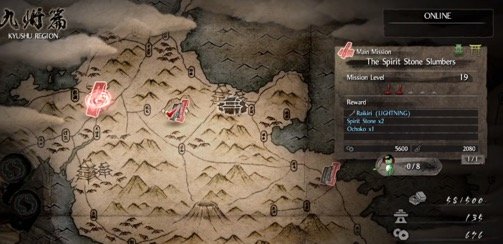
Combat is Ki.
Regardless of these design choices, this is still a Team Ninja game. Gaiden fans can rest easy, because at the heart of Nioh’s hard-core RPG elements is a gloriously visceral combat system. At its most basic, the gameplay too takes heavy inspiration from the Souls series. You are given the option of light or heavy attacks with a slew of weaponry. Movement- based commands like attacking and dodging are governed by an endurance bar called Ki.
Where Nioh sets itself apart from the mould is in its tweaks and additions to this familiar system. On top of light and heavy attacks, with each weapon William has three combat stances, each containing a different move set and combat application. High stance prioritizes damage, low focuses on evasion and blocking, and mid-stance offers a balance, combined with optimal dodges for spacing between the enemy.
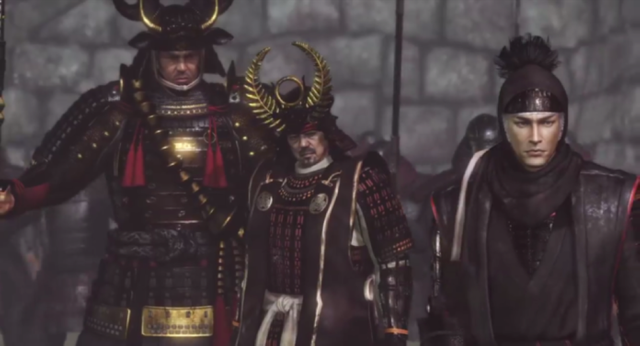
Players are also treated to complementary battle options, such as magic spells that can buff or debuff stats, or spiked caltrops that slow your enemy. When these aspects are unified by a singular purpose of destroying your enemy, Nioh shows off just how many options William is given to bring down his enemies.
Where there is light, there is also the dark.
Though, William is just one half of combat, with the other half being excellent enemy and boss design. Throughout your playthrough, you’ll cross paths (and swords) with Sengoku period foot soldiers, post-human husks, ice maidens, mages, ninjas, samurai, and the Yokai (Nioh’s awesome demonic, folklore-inspired beasts). Each encounter is a test of dexterity and strategy, whether it’s the moment-to-moment gameplay or the countless statistics that denote your damage and defence.
The demands brought on by confrontation with Nioh’s antagonistic denizens will dictate both how you play, and what kind of experience you get out of the game. If you can get past the daunting difficulty and seemingly insurmountable RPG elements, Nioh embraces the player as a true Japanese warrior. Like it’s setting, the game expects diligence, focus and skill. It may turn some players off, especially in its opening hours, when you’re offered little hand-holding in the way of explanation, but the challenges are met with equal rewards. If you welcome and learn everything the game throws at you, Nioh can provide complex, fast- paced and memorable combat, and offers moments you’ll be thinking about long after the fight is won.
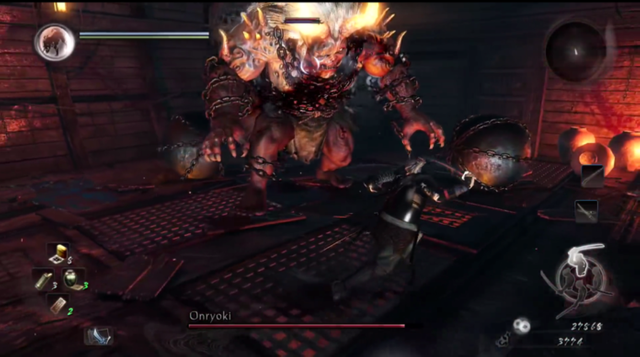
Sure, the action is what makes Nioh a fundamentally great game, but once it clicks into place for the player, what keeps you busy and hungry for more is everything else. Team Ninja has brilliantly set the stage for a great action game, morphing it into its own unique beast. The combat holds up on its own, but when combined with deep role-playing systems, a brilliant setting and a wealth of options to approach its challenging campaign, Nioh stands proud amongst one of the best action-JRPGs in recent memory.
Matthew Waite @watt-maite
Gamers Classified
Source
Website: https://www.gamersclassified.com/
Twitter: https://www.twitter.com/gamesclassified
Facebook: https://www.facebook.com/GamersClassified
Instagram: https://www.instagram.com/gamersclassified
Hi! I am a robot. I just upvoted you! I found similar content that readers might be interested in:
https://www.gamersclassified.com/latest-features/review-nioh/
Downvoting a post can decrease pending rewards and make it less visible. Common reasons:
Submit
I am the owner of Gamers Classified and I am reposting this content on Steemit.
Downvoting a post can decrease pending rewards and make it less visible. Common reasons:
Submit
Nioh is a great agme, I think the level design is the weakest part of it though maybe next the visuals (the art held it up though). The world is good but the majority of levels are really forgettable with exceptions.
The boss battles are truly exceptional and the OST was great, combat was also excellent, so I agree with you on all those points! Good read. I did notice you didn't mention how much easier it is to co-op in that game vs souls, that should be pointed out for potential buyers imo.
Downvoting a post can decrease pending rewards and make it less visible. Common reasons:
Submit
Thank you for the great feedback! Yes good point around the co-op component! I certainly agree with you on that point!
Downvoting a post can decrease pending rewards and make it less visible. Common reasons:
Submit
Love the game. Still playing it, still loving it! Great review.
Downvoting a post can decrease pending rewards and make it less visible. Common reasons:
Submit
Thank you!
Downvoting a post can decrease pending rewards and make it less visible. Common reasons:
Submit